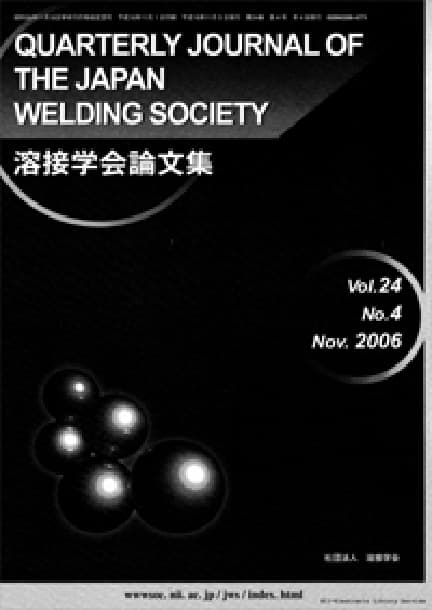Measurement of Weld Pool Oscillation in Pulsed TIG Welding
Hiroshi Maruo, Yoshinori Hirata, Toshikuni Kusano, Ikuo Okano
pp. 457-464
DOI:
10.2207/qjjws.3.457Abstract
An experimental investigation of weld pool oscillations was carried out for stationary pulsed TIG arc weld pools using analogue transistor power source. Oscillations of molten metal were electrically detected with the aid of accelerometer and observed by high speed photography. Arc force was also evaluated from pressure distribution of TIG arc on the water cooled copper anode.
Results obtained are summarized as follows;
(1) It is possible to detect resonance frequency of weld pool using the measurement system of mechanical vibration, which is consisted of accelerometer and specimen attached on the beam.
(2) Larger weld pools are found out to have lower resonance frequency in stationary pulsed TIG welding.
(3)In the frequency range lower than the fundamental natural frequency of weld pool, amplitudes of weld pool oscillations can be evaluated through measuring the acceleration of vibration of the beam.
(4) Arc force is almost proportional to the square of current applied. In pulsed TIG welding, molten pool is drived to oscillate by fluctuation of arc.force due to plasma stream.
Readers Who Read This Article Also Read
QUARTERLY JOURNAL OF THE JAPAN WELDING SOCIETY Vol.3(1985), No.2
QUARTERLY JOURNAL OF THE JAPAN WELDING SOCIETY Vol.3(1985), No.3
QUARTERLY JOURNAL OF THE JAPAN WELDING SOCIETY Vol.3(1985), No.3










